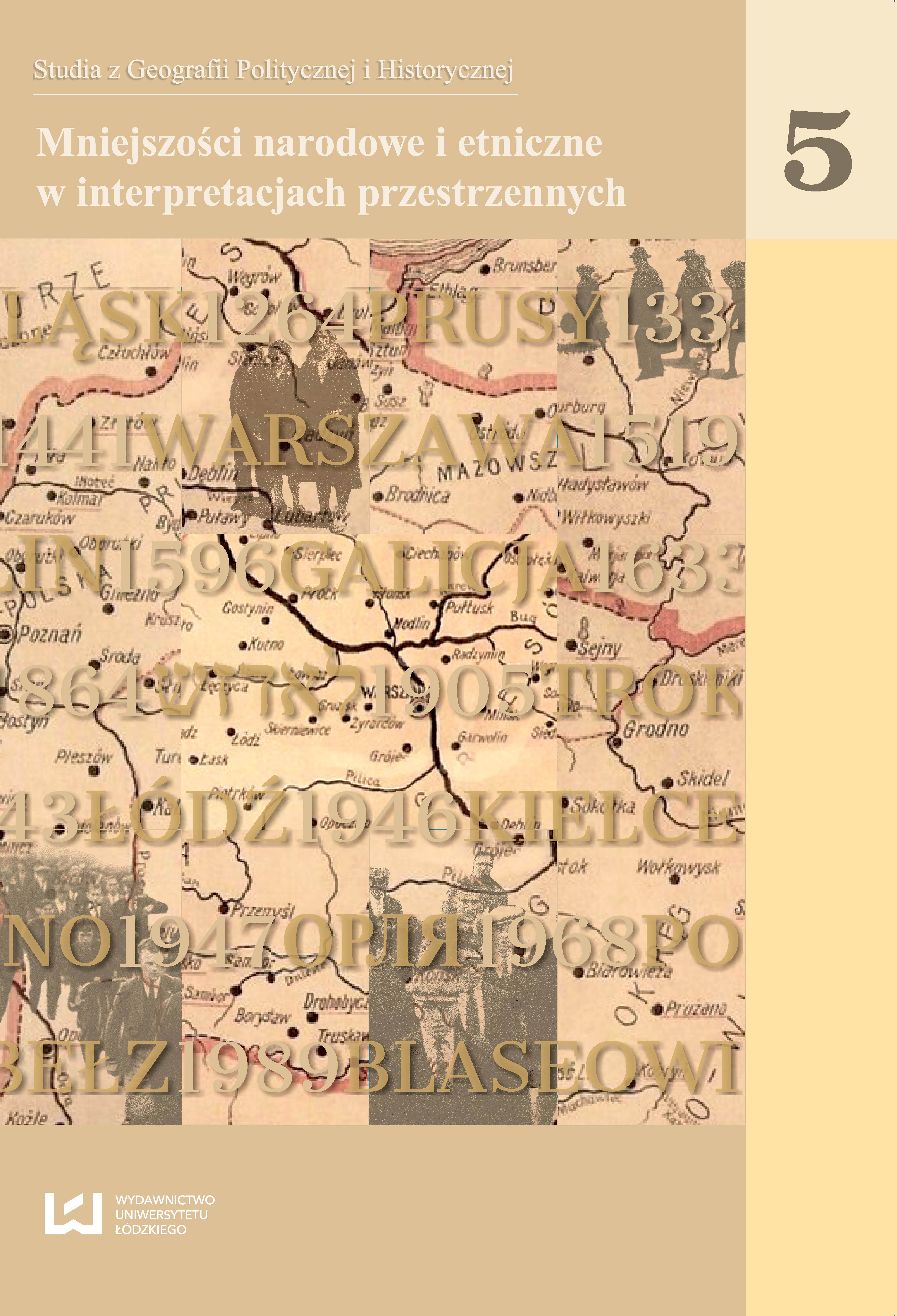Skład narodowościowy ludności Federacji Rosyjskiej na przełomie XX i XXI wieku
DOI:
https://doi.org/10.18778/2300-0562.05.10Słowa kluczowe:
Federacja Rosyjska, demografia, narodowości, mniejszości narodoweAbstrakt
W artykule opisano i skomentowano w ujęciu statycznym i dynamicznym przemiany demograficzno-etniczne zachodzące w Rosyjskiej SSR oraz Federacji Rosyjskiej. Przedstawiono liczebność i rozmieszczenie geograficzne poszczególnych narodowości zamieszkujących terytorium współczesnej Federacji Rosyjskiej. Podstawą analizy statystycznej, a następnie merytorycznej były trzy spisy ludności (1959, 1989, 2010). Porównanie danych z tych trzech przekrojów czasowych dało możliwość określenia stanu i przeobrażeń narodowościowych w ostatnich dekadach XX w. oraz w pierwszym dziesięcioleciu XXI w. Skoncentrowano uwagę na sytuacji etnicznej w Autonomicznych Republikach i Okręgach Narodowościowych.
Bibliografia
Atlas narodow mira, 1964, Moskwa.
Google Scholar
Bogojawlenskij D.D., 1993, Małoczisliennyje narody rossijskowo siewiera, [w:] Rybakowskij L.L. (red.), Socjalno-diemograficzieskije razwitie rossijskowo siewiera, Moskwa, s. 171–211.
Google Scholar
Borkowicz J., Górecki W., 2000, Republika Mari-El jako przykład rosyjskiej prowincji, [w:] Magdziak-Miszewska A. (red.), Rosja 2000. Koniec i początek epoki, Warszawa, s. 175– 226.
Google Scholar
Bruk S.I., 1993, Narody bywszego SSSR w stranie i za rubieżom, [w:] Rasy i narody, Moskwa, s. 49–75.
Google Scholar
Bruk S.I., 1994, Nasielienije Rossii (diemograficzeskij obzor), [w:] Narody Rossii, Moskwa, s. 17–24.
Google Scholar
Dębski S., 2001, Problemy demograficzne Federacji Rosyjskiej, „Biuletyn PISM”, 6, s. 57–62.
Google Scholar
Eberhardt P., 2002, Geografia ludności Rosji, Warszawa.
Google Scholar
Eberhardt P., 2010, Zmiany podziałów administracyjnych w Cesarstwie Rosyjskim, w Związku Sowieckim oraz w Federacji Rosyjskiej, „Studia z Dziejów Rosji i Europy Środkowo-Wschodniej”, 45, s. 239– 258.
Google Scholar
Gumilow L., 2004, Od Rusi do Rosji, Warszawa.
Google Scholar
Isamutbinow D.J., 1997, Giegrafiriczieskaja srieda i etnosy Siewiernowo Kawkaza, stranicy istorii i gieopoliticzeskije pierspiektiwy, Sankt Petersburg Kabuzan W.M., 1992, Narody Rossii w pierwoj połowinie XIX w. Czisliennost i etniczeskij sostaw, Moskwa.
Google Scholar
Kabuzan W.M., 1996, Nasielienije siewiernowo Kawkaza w XIX–XX wiekie, Moskwa.
Google Scholar
Kazmina O.E., Puczkow P.I., 1994, Osnowy etnodiemografii, Moskwa.
Google Scholar
Mastiugina T.M., Pieriepiełkin A.S., 1997, Etnologija. Narody Rossii: Istorija i sowriemiennoje położienije, Moskwa.
Google Scholar
Maryański A., 1995, Przemiany ludnościowe w ZSRR, Warszawa–Kraków.
Google Scholar
Nacjonalnyj sostaw nasielienija SSSR, 1991, Moskwa.
Google Scholar
Nasielienije Rossii w XX wiekie, 2000, Istoriczieskije oczierki, t. 1, red. J. Poljakow Moskwa.
Google Scholar
Rossijskij statisticzeskij jażegodnik, 2000, Moskwa.
Google Scholar
Nacjonalnyj sostaw nasielienija SSSR, 1991, Moskwa.
Google Scholar
Socjalno-diemograficzieskij portret Rossii po itogam wsierossijskowo pieriepisi nasielienija 2010, 2012, Moskwa.
Google Scholar
Statisticzeskij-diemograficzeskij portret Rossii po itogam wsiesojuznoj pieriepisi nasielienija 2010 g. – Statistika Rossii, 2012, Moskwa.
Google Scholar
Szerepka L., 2006, Sytuacja demograficzna Rosji, Warszawa.
Google Scholar
Tarchow S.A., 1993, Etniczeskaja striuktura wastocznej Jewropy i Zakawkazia, Moskwa.
Google Scholar
Tarchow S.A., 2001, Izmienienije administratiwno-tieritorialnowo dielienija Rossii za posliednije 300 liet, „Gieografija”, 15 (598) i 21 (604).
Google Scholar
Zajonczkowskaja Ż.A., Karaczurina L.B., 2001, Migracija nasielienija, [w:] Gieografija nasielienija i socjalna gieografija. Analitiko-Bibliograficzeskij Obzor, Moskwa.
Google Scholar
Zdrowomysłow A.G., 1997, Mieżnacjonalnyje konflikty w postsowieckom prostranstwie, Moskwa.
Google Scholar
Pobrania
Opublikowane
Jak cytować
Numer
Dział
Licencja

Utwór dostępny jest na licencji Creative Commons Uznanie autorstwa – Użycie niekomercyjne – Bez utworów zależnych 4.0 Międzynarodowe.








